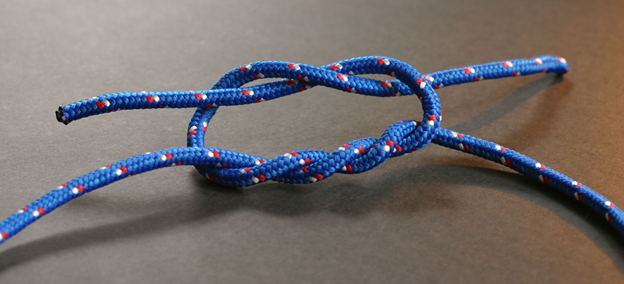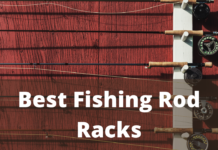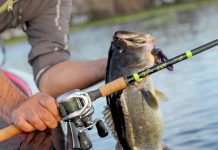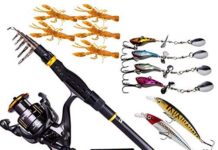Imagine fishing on a pleasant Sunday morning on a river that calmly meanders through the forest. A river bustling with fish of all sizes. Now imagine the frustration of not catching a single fish all because the hook kept slipping away from the reel since it wasn’t appropriately knotted. Many of us have faced this situation before and have learned our lesson. Therefore, to ensure that you do not meet the same fate, let us share eight different fishing knots with you that will help make your fishing endeavors more successful.
Fishing knots play a pivotal role in deciding the angler’s fate. Specifically, an angler is as good as his fishing knots. All the effort of luring a fish to the hook and the strenuous tackling to get it to land will go to waste if the knot slips and the line breaks. An angler can catch more fish and be more efficient if they know the appropriate knot to use. It would be safe to say that there is not simply one knot that works for everything. Each knot serves its own purpose.
Note: If you want the easy way out and not (pun intended) have to tie any knots, use a knot tying tool instead.
Below are eight critical knots that you should know.
1. Improved Clinch Knot

https://commons.wikimedia.org/wiki/File:KlammerknotenLose.JPG
This knot is widely popular and is suitable for nearly all situations. This knot is perfect for securing a fishing line to the hook and also to lure in the fish. However, this knot is not recommended for heavy fishing lines. This knot is suitable for attaching a bulky wire hook to a minimal diameter tippet. The final pull increases your chances of catching a big fish.
2. Berkley Braid Knot
Berkley advanced the Berkley braid knot by using it with super braided lines. This braid is a boon and works flawlessly with fluorocarbon and monofilament fishing lines. It is one of the most reliable fishing knots and the braided line can be connected directly to tackle lines. This includes lures, hooks and swivels, which have a greater chance of slipping and making your fishing experience a dull one.
3. Uni Knot
The Uni knot, formerly known as the Gallows knot, is a substitute for the multiple overhand nooses. Norman Duncan created this knot in the 1960s, so it is also referred to as the Duncan Knot. This knot is multipurpose and can be used to join two fishing lines and attach hooks, swivels, or lures to the end of the line.
4. Surgeon’s Knot

https://commons.wikimedia.org/wiki/File:Surgeon%27s_knot_(tying).jpg
This knot is a modified version of the surgical knot and simple evolution of the reef knot. An extra twist is added while the first throw is tied to form a double overhand knot. This additional turn provides the necessary friction and prevents loosening while the second half is knotted. This knot is mainly for those who prefer fly fishing. It is perfect for attaching a fly to the end of the line without the worry of the fly detaching itself either midair or when the angler is reeling it in.
5. Turtle Knot
Major William Greer Turtle popularized this knot in the 19th century, so this knot is named after him. This knot is used to attach a hook or a fly to the end of the line and is appropriate for fly fishing. Not only is this knot strong, but it can be used with fishing lines of any thickness. However, this knot should be avoided with flies having a leader smaller than the eye. Since most modern leaders are pretty soft, this knot should be used at the angler’s discretion.
6. Palomar Knot
 https://commons.wikimedia.org/wiki/File:PalomarKnotSequence.jpg
https://commons.wikimedia.org/wiki/File:PalomarKnotSequence.jpg
This knot is not only easy to tie, but is also very strong. This knot works wonders with braided lines and can be used to attach hooks, swivels, tippets, snaps or leaders to the fishing line. This knot is perfect for those who are into saltwater angling. Once someone masters how to make this knot, it is almost impossible to break it. It does not tamper with the fishing line’s original strength, and unlike most other knots, it does not jam upon release.
7. Spider Hitch
This knot is perfect for light tackle fishing and forms a double loop. However, remember that it has low shock absorption capacity and is not as durable as braided lines. Spider hitch knots are faster to tie and can be used to attach a bulky leader to the double line of a spider hitch braid. It is safe to say that this knot helps retain the fishing line’s original strength and is faster to tie than most other knots. It can be tied in less than ten seconds if someone has proper practice.
8. Nail Knot
The nail knot is one of the essential knots that someone must know to attach the leader to the fly line. The knot gets its name from a nail that primarily acted as a guide to make the knot. Many anglers prefer the use of a hollow object like a straw or a tube to make the process easier. This knot is robust and does not slip. This knot is smooth and quickly passes through the guides. Also, it does not hinge and works wonders on fluorocarbon lines.
Angling is a sport that people of all ages can enjoy. Like any other sport, as soon as someone gets the hang of all the basics, the urge to keep catching a fish becomes unstoppable. The knots listed above aim to bring out the angler in everyone, making angling a fun sport where an angler can derive the utmost satisfaction and pleasure.
Be it fly fishing or spin fishing, you must be thorough with the essential prerequisites so as not to disrupt fellow anglers around you, allowing everyone to have a good time.
It is a good idea to practice knots a couple of times before actually going fishing. Not only does this save your time, but it makes you confident and better equipped to handle any hurdles that you may face.
Fishing is a sport that you are supposed to enjoy and not stress over. Therefore, once you have mastered the basic skills, going to the open waters to enjoy a fly fishing game will be the best thing you will have ever done. Also, do not be upset if you fail to catch a fish immediately. Instead, improve on your strategies and try again. Fishing is all about experimenting and once you find the perfect technique, you will become unstoppable. So, go out and try the knots we discussed and see which one suits you the best and allows you to catch some amazing fish.
Table of Contents



